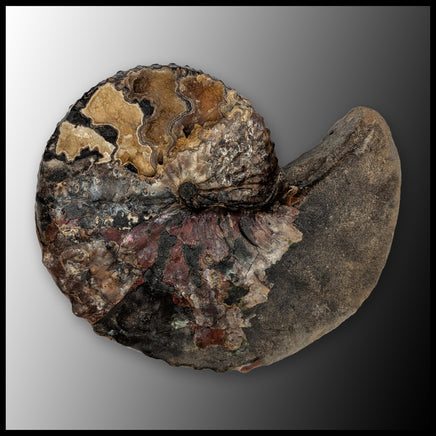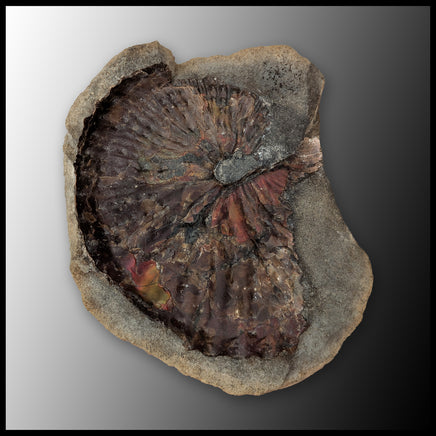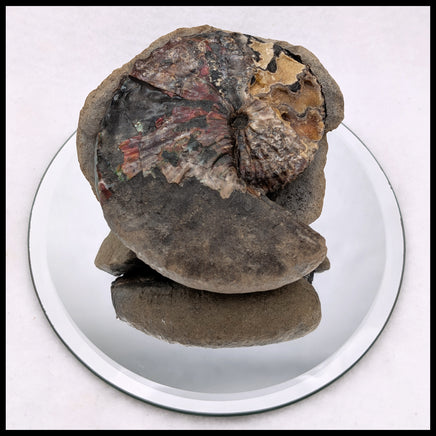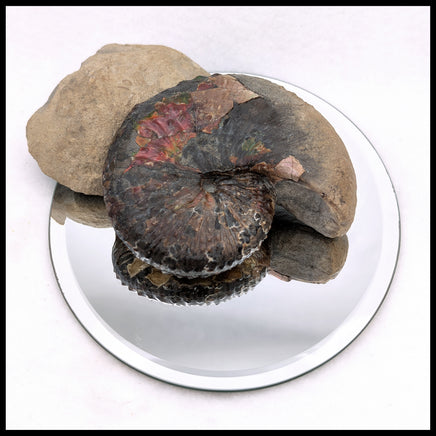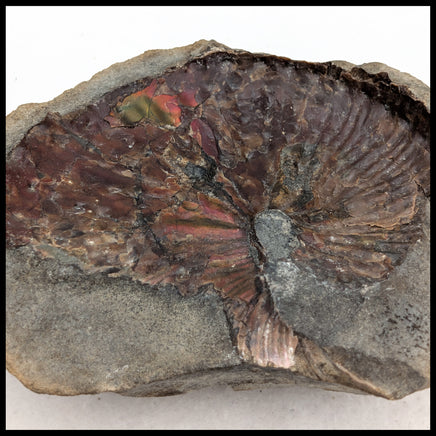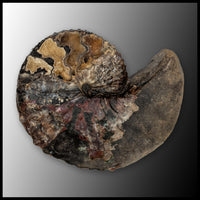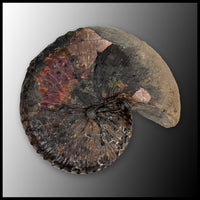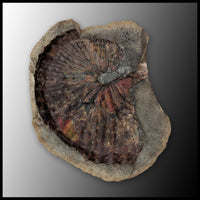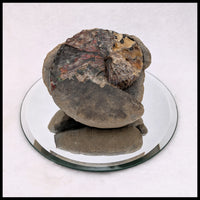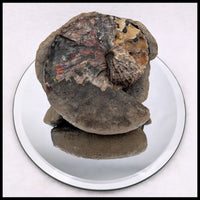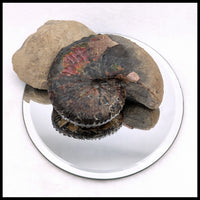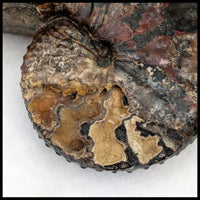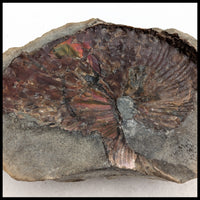This ammonite specimen comes from South Dakota in the Cretaceous period when the area was submerged by the Western Interior Seaway millions of years ago. They are typically preserved in hard concretions that must be carefully removed. This is a perfect example of a piece of these concretions, with the negative fossil impression paired with its ammonite fossil that fits perfectly inside it. Both pieces have ridges and sections with red iridescence. Some areas of the ammonite surface show leafy suture patterns, and one side has a broken/weathered outer shell that reveals the inner chambers filled with yellow calcite crystals.
Pictures show both sides of the ammonite, the negative on its own, and how the two pieces fit together.
Ammonite:
4" x 3"
12.4oz (352g)
With negative:
1lb 6.5oz (638g)
Ammonites are prehistoric nautilus related to the modern day nautilus, squid, and octopus family. These squid-like creatures lived in the sea between 65 - 415 millions years ago. Ammonites are called cephalopods because their heads and tentacles protruded out of the same opening; they grew by building larger chambers on their shells. Some species have been found at almost 6 feet in diameter, but they may have reached up to 9 feet!

